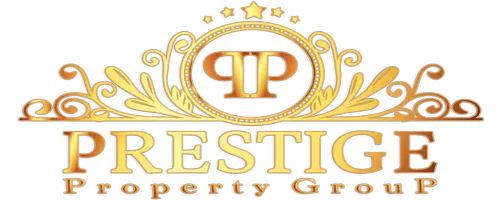Mandatory Fixes After a Home Inspection: What Buyers and Sellers Need to Know

When it comes to buying or selling a home, the home inspection can be a major turning point. It helps buyers understand what they’re walking into and alerts sellers to problems that could delay or derail the deal.
A licensed inspector will assess the home’s condition from top to bottom, looking for structural issues, faulty systems, or other problems that need attention before closing. While not every fix found in the home inspection is mandatory, certain issues can stall a sale, raise red flags with lenders, or turn buyers away altogether.
The good news? Many issues can be negotiated between a buyer and seller. So which fixes are actually required after a home inspection? Who pays for these repairs? And when should you just walk away from the sale?
We’ll break down which fixes matter most—and what to do next if the report reveals more than you bargained for.
What fixes are mandatory after the home inspection?
In most traditional home sales, there’s no legal requirement to fix problems with the home. However, mandatory repairs often come into play when a lender or insurance provider is involved or safety is at risk.
Buyers financing with an FHA, VA, or USDA loan, for example, may face lender requirements for specific repairs before approval. Even in conventional sales, issues that compromise a home’s structure or livability can threaten the deal if not addressed prior to purchase.
Here’s what you should look out for, whether you’re the buyer or the seller.
Structural issues
Structural problems are among the most serious (and costly) issues flagged during a home inspection.
- Large or significant foundation cracks
- Sagging or leaking roof
- Major water damage
For buyers: Ask your real estate agent if a structural engineer should be brought in for a second opinion before finalizing the deal.
For sellers: Consider getting ahead of these issues with a pre-listing inspection so you’re not caught off guard during post-inspection negotiations.
Health and safety concerns
Any condition that poses a health risk may need to be addressed before closing, especially if it violates local disclosure laws or endangers future occupants.
- Mold
- Radon
- Carbon monoxide
- Lead paint in older homes
- Asbestos
For buyers: Look into local testing services to get an estimate of cleanup costs. You may be able to negotiate credits or ask the seller to cover remediation.
For sellers: If your home was built before 1978 or you suspect environmental concerns, test early so you have time to resolve issues before listing.
Active leaks or electrical hazards
A dripping pipe or exposed wiring isn’t just inconvenient, but can become a serious liability. Most buyers (and their lenders) expect these to be resolved before the sale goes through.
- Plumbing leaks
- Exposed wires
- Outdated electrical components
- Overloaded circuit breakers
For buyers: Prioritize safety concerns over cosmetic fixes during negotiations—these are the issues most likely to impact closing.
For sellers: Small leaks or outdated wiring might seem minor but can snowball into lost deals. Having these addressed proactively can help protect your asking price.
Code violations
Homes that don’t meet current building codes can trigger required repairs after inspection, particularly for government-backed loans or home insurance providers.
- Missing smoke detectors
- Unpermitted work
- Outdated wiring like knob and tube
- Outdated plumbing
For buyers: If you’re using a government-backed loan, ask your lender for a list of common red flags so you can watch for them during inspection.
For sellers: Review your local code requirements before listing—especially if you’ve made recent upgrades—to make sure everything’s in the clear.
5 surprising repairs that can delay closing
Even if they aren’t always labeled “mandatory,” these repairs frequently trip up financing, appraisals, or buyer confidence.
1. A broken HVAC system
Most lenders require heating and cooling to be functional before approving a loan, especially in extreme climates.
2. Termite or pest infestations
VA loans and other government-backed loans often mandate termite inspections, and if active damage is found, treatment is typically required before closing.
3. Sewer line or major plumbing issues
A flagged sewer scope or evidence of backups can delay financing and lead buyers to re-negotiate or walk away.
4. Missing smoke or carbon monoxide detectors
Life safety devices are a tiny fix, but can have big consequences. These are required in most municipalities and are often a lender condition for closing.
5. Cracked or broken windows
Beyond curb appeal, broken windows can raise safety and energy efficiency concerns—enough to halt certain deals in their tracks.
Who is responsible for repairs after a home inspection?
In most cases, the seller is not legally required to fix what shows up in the inspection report.
However, a buyer can request repairs, credits, or price reductions as part of the post-inspection process. The final agreement depends on what’s outlined in the purchase contract, how motivated each party is to close, and whether any fixes are required by the buyer’s lender or local law.
“Often, it’s the buyer’s responsibility once under contract to make repairs found in a home inspection report,” says Joe Rath, Director of Real Estate Operations at Redfin.
But a pro tip for sellers: hire a home inspector proactively.
“Get ahead of it and start knocking off that list of things that you can do so that when a buyer brings a home inspector through, you have already anticipated a lot of what might come up on that report,” Rath recommends, “because the reality is, the buyer is going to ask for some of these things to be repaired.”
That said, major safety issues or lender-required home repairs often fall on the seller if they want the sale to move forward, particularly in a buyer’s market. For smaller concerns, buyers and sellers might split costs or negotiate a repair credit. Negotiations require a balance of priorities, timing, and leverage, which is why having a skilled real estate agent on both sides of the deal makes a big difference.
Finally, if an entire property is being listed and sold “as-is,” the seller will not make repairs or offer any credits for potential fixes.
Home inspection repairs that aren’t required
Not every item flagged during a home inspection needs to be fixed before closing. These issues are often considered cosmetic, routine, or optional, especially in competitive markets. Buyers can always request these repairs, but sellers are under no obligation to make them.
That’s why it’s important to distinguish between “nice to have” updates and deal-breaking problems. In many cases, buyers choose to accept these smaller imperfections or negotiate a credit to update the home on their own terms after moving in.
1. Cosmetic wear and tear
Scuffed walls, chipped paint, worn floors—normal signs of use usually don’t affect the sale.
2. Foggy windows (broken seals)
Common in older homes. While unsightly, they typically don’t impact function and are rarely required fixes.
3. Outdated appliances that still work
Unless completely nonfunctional, older appliances are considered “as-is” in most contracts.
4. Minor landscaping issues
Overgrown shrubs or patchy grass won’t affect financing or safety, so most buyers handle these post-move.
5. Loose fixtures or hardware
Wobbly doorknobs, squeaky hinges, or missing cabinet pulls are rarely worth delaying a deal over.
Pro tip: Focus your energy (and negotiation power) on safety, structure, and anything a lender or your home insurance provider might flag.
When should you negotiate, ask for a price reduction, or walk away?
A home inspection can shift the tone of a real estate deal in an instant. Once the report comes in, both buyers and sellers have a choice to make: negotiate repairs, request a price reduction or credit, or walk away entirely. The right move depends on the severity of the issues, the terms of your contract, and how much flexibility both parties have to keep the sale on track.
Here’s how to think through your post-inspection options.
Negotiate repairs when the issues are fixable but significant
If the inspection reveals serious but solvable problems—like a leaky roof, mold in the basement, or outdated wiring—it’s common for buyers to ask the seller to handle the repairs before closing.
Sellers may agree to fix the issue directly, or offer a credit to offset the cost. This route is ideal when both parties want to stay in the deal, but need to level the playing field.
“Don’t go through and nitpick the small things, but if it’s above the normal wear and tear of the property, you can ask the seller to take care of those items for you,” advises Rath.
“Or, the seller might give you a credit at closing toward some of those repairs, paying your agent, or maybe furniture down the line.”
For buyers: Have contractor estimates in-hand to support your request.
For sellers: Prioritize safety and lender-related fixes first to keep the process smooth.
Buyers can request a price reduction or credit to handle repairs themselves
In some cases, buyers might prefer to handle repairs themselves, especially if they want to choose the contractor or update things their own way. That’s where a price reduction or seller credit comes in. Instead of asking the seller to do the work, you negotiate a financial concession and manage the fix after closing.
Why it works: This option streamlines closing and avoids delays due to scheduling repairs.
Heads up: Make sure your lender is aware of any changes to the purchase price or closing costs.
The buyer can walk away when the issues are deal breakers
Sometimes, the inspection reveals problems that go beyond what you’re willing (or able) to take on. Some homes might be in need of more TLC than anticipated. Major foundation issues, hidden water damage, or signs of neglect may make walking away the smartest (and safest) choice.
Most real estate contracts include an inspection contingency, which gives buyers the legal right to back out without losing their earnest money.
Tip for buyers: Don’t ignore your gut. If the list feels overwhelming now, it won’t get easier post-closing.
Tip for sellers: If a buyer walks, it’s probably worth re-assessing the property’s condition before relisting. Issues found during a home inspection will need to be disclosed to the next buyer.
FAQ: What fixes are mandatory after a home inspection?
Who pays for the repairs after a home inspection?
Buyers and sellers will usually negotiate who pays for repairs after a home inspection. Sellers aren’t required to fix everything, but may agree to cover major issues or offer a credit. In a competitive market, buyers might cover the cost of repairs themselves depending on the terms of the purchase agreement.
What happens if mandatory fixes aren’t made?
If mandatory repairs aren’t completed, a home sale could be delayed, or fall through altogether. Lenders may refuse to approve the loan if safety, structural, or code issues go unaddressed. Buyers can also walk away if repairs were part of the purchase agreement or required by contingency.
When should you walk away from a home purchase after the inspection?
Buying a home is a lengthy and expensive process, but there are times when it might be smart to walk away from the deal. If the seller won’t cover major or costly repairs, the home needs more work than the buyer is willing to take on, or if the deal no longer feels fair, an inspection contingency allows a buyer to back out after the home inspection.
The post Mandatory Fixes After a Home Inspection: What Buyers and Sellers Need to Know appeared first on Redfin | Real Estate Tips for Home Buying, Selling & More.
Categories
Recent Posts










GET MORE INFORMATION

